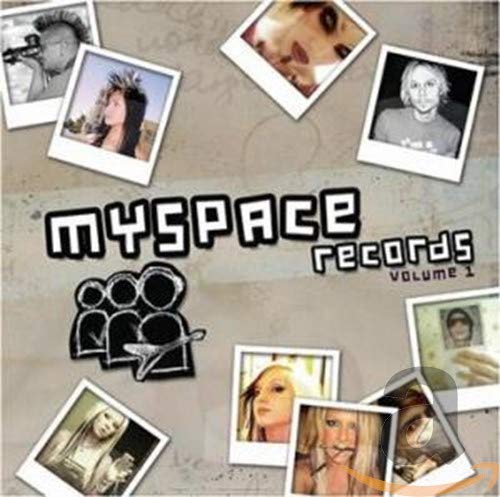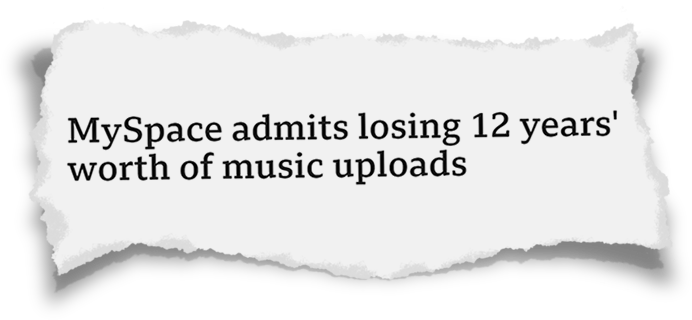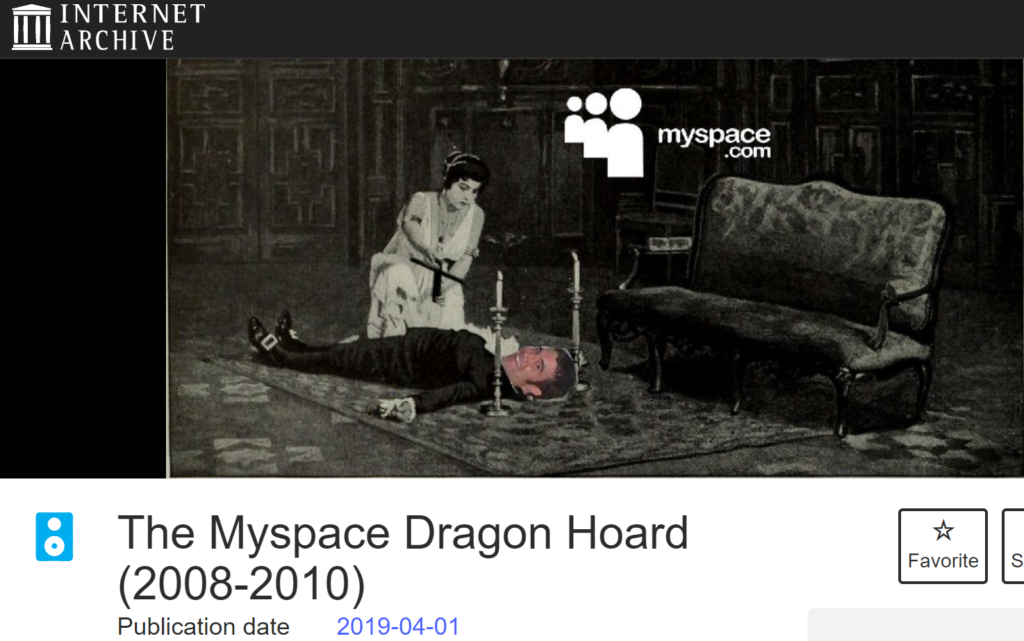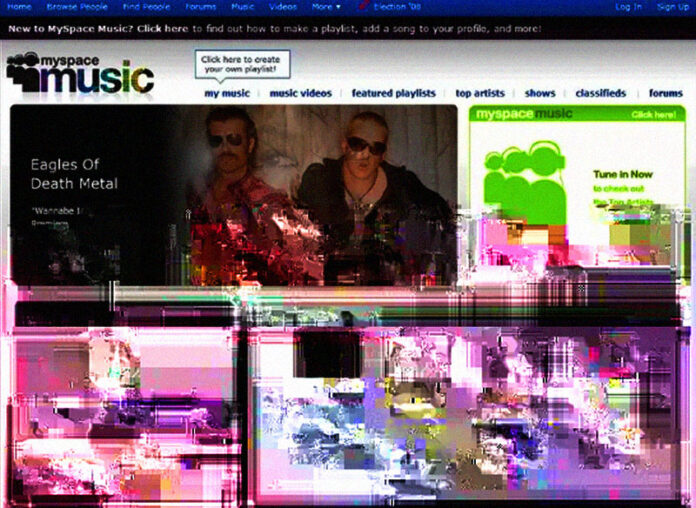On March 18th, 2019, it came to light that MySpace lost all of its user content prior to 2015.
While the story briefly made headlines, it was quickly forgotten. To most, the site exists as nothing more than an anecdote. It’s been reduced in public consciousness to “the site that Facebook replaced.” And consequently, there’s little reason for people to care. That’s not to say it’s inaccurate to summarize its downfall that way; but it understates the unique culture the platform fostered, and just how it influential it was to the Internet of today.
When the site debuted in 2003, it completely revolutionized the experience of being an independent artist. MySpace was music-driven, and allowed users to upload MP3s and even release albums onto the platform. At a time when the most popular music-sharing platform was the legally-dubious Napster, this was pivotal. Instead of having to burn CDs and physically pass them out by hand, independent artists were now able to post their demos online for immediate feedback.
MySpace not only standardized the process, but also did so on the first social media platform to reach a global audience.
The most important function of any art-centric website is its ability to reach the average person. There have been countless attempts at creator-driven platforms, all of which are equally unsuccessful. No matter how tailored the alternative is, artists would rather stay on Twitter and complain. That’s because there’s little reason to publish on a site with no audience. This modern dilemma was not present in the advent of social media, because the average person was using MySpace to socialize, post bulletins, and sow chaos with their meticulously crafted top eight.
In June of 2006, MySpace surpassed Yahoo! and Google as the most visited website in the United States.

MySpace was the first time artists could communicate directly with their listeners. It had been possible to a lesser extent with fan clubs and mailing lists, but it truly marked the beginning of the creator-viewer relationships we’re now accustomed to. For some artists, this meant cutting out the middleman. It allowed them to reach an audience without having to sign a contract. For others, it meant record labels finding them. MySpace famously ignited the careers of bands like My Chemical Romance and Panic! at the Disco, who had massive fanbases on the site. The site’s founder, Tom Anderson, would even start ‘MySpace Records’ in partnership with Interscope.
To the regular person, MySpace was just the site they used before Facebook. But to many artists, it was a miraculous break that changed their view of streaming and the Internet entirely.

This article began by stating MySpace “lost” all of the user content uploaded before 2015. But perhaps it may be more fitting to describe them as “destroyed.”
The official story is that during a server migration they supposedly misplaced every single photo, video, and audio file older than three years old. This included over 50 million MP3s from upwards of 14 million artists. This excuse was given months after the fact, when a single Reddit user noticed and inquired why their profile appeared empty.
“I’m deeply skeptical this was an accident. Flagrant incompetence may be bad PR, but it still sounds better than “we can’t be bothered with the effort and cost of migrating and hosting 50 million old MP3s.”
Andy Baio, American technologist and blogger. (via. Twitter)
I must preface this by stating there is no concrete evidence of conspiracy…
…but they saved a lot of money by losing those files. In 2005, MySpace was purchased by News Corp for $580 million dollars. Half a decade later, it was sold again for a fraction of that price. Its continual failing relevancy makes hosting the servers an increasingly foolish business decision, as it undoubtedly operates at an annual net loss. It’s one thing to own a dying website; it’s another to actively lose money from it. Additionally, many of those files were mislabeled copyrighted music, which theoretically could be expensive to re-analyze.
Take into account the fact that it took three months for anyone to even notice it was missing – and you can almost understand why they’d do it intentionally.
However, the fact there was no backup means that twelve years’ worth of content was permanently lost – and our understanding of the site’s history and ecosystem is destined to degrade overtime. From the artists who never could, to the early interactions of now-mainstream acts; from the expressive layouts of the introvert, to the parties organized and documented on the site; they will all become nothing more than distant memories, a stark contradiction to the belief many believed at the time:
“Once on the Internet, always on the Internet.”
In April of 2019, the Internet Archive recovered 490,000 MP3s from the lost MySpace servers. They had been collected using unknown means by an anonymous academic study conducted between 2008 and 2010. The collection, referred to as the “MySpace Dragon Hoard,” is likely the closest we will ever get to experiencing what was lost. Despite being a cumulative total of 1.3 terabytes, it accounts for less than 0.1% of the destroyed MP3s.

If you have time to spare, it may be worthwhile to explore the collection. It’s insightful to what the actual site was like. It’s very rare, in all honesty, to find wholly original music. More common are pop songs mislabeled to insult an ex-girlfriend, or drum and bass remixes of Weezer. But amidst the pop-cultural wasteland are gems you likely wouldn’t have discovered elsewhere.
In my own rummaging, I found an artist I’m still trying to determine the identity of. Locating their profile, transcribing the lyrics, and even searching for associated acts has come up with nothing apart from a vague notion of the collective they’d networked with. The tracks, whose metadata consisted entirely of the phrase “kill yourself,” were not a bait-and-switch as I’d initially expected. Instead, they were genuine expressions of desolation, and melancholy. If not just to hear their progression as an artist, it fascinates me as to why they’d release their album this way; and why they’ve become so elusive.
That is only a taste of what lies inside the so-called “Dragon Hoard,” with each track having the potential to send you down a rabbit hole of interpretation and forgotten artistry. It is a time capsule left unintentionally for ourselves to discover – one that due to circumstance was unfortunately cut short.
I placed heavy emphasis early on in the community that MySpace fostered. That’s because I feel it remains unparalleled to this day. On modern social media platforms, artistry is largely an afterthought. Twitter lacks even basic cropping features; Instagram compresses images and enforces strict resolutions. Even Newgrounds, the best of the available options, only survives in conjunction with the others. It’s very rare for someone to use Newgrounds as their main site. They’ll post there, sure, but will they use their feed or frequent the forums?
The closest I can think of in recent memory is tumblr. That platform similarly allowed users to completely customize their blog’s appearance, upload images of varying resolution, and even host music. Unfortunately, that all changed following the ban on adult content, which led to overbearing censorship policies enforced through automation.
MySpace was not without its faults, with many feeling the site began pandering to larger artists at the end of its relevancy. It was, at the end of the day, just another social media platform – and the same cycles, mentalities, and pointless dramas existed on it as well. But there was a lot more to its impact than just being the predecessor to Facebook.
I hope that this article can help shed light on that, and why the loss was so devastating.

